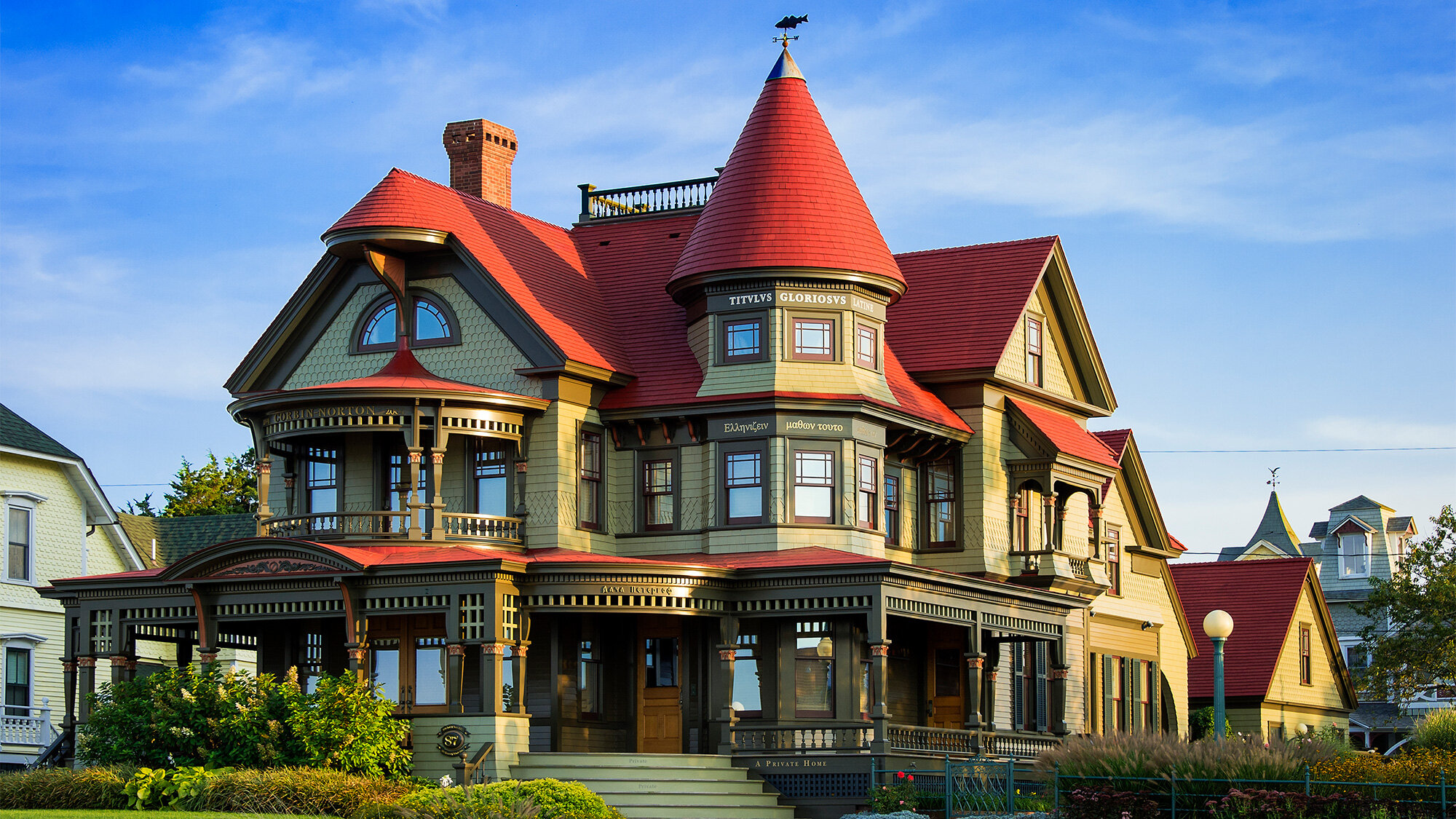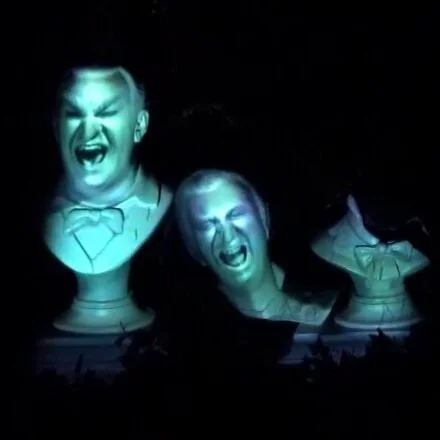Disneyland's Main Street USA - A Walk Down Disney Legend Lane
Whether you visited Disneyland in California today, last year, 10 years ago, or on opening day, we all experienced the same land first. Main Street USA is the welcoming hand that launches you into each of the nine lands of the park. It greets you with warm colours, Walt’s light up in his apartment, and the opportunity to branch off anywhere. It also provides you with many options of what part of Disneyland you want to take home with you via souvenirs. If you’ve ever walked down that street and really paid attention to the details, you would see all of the little nods to innovators who made Disneyland what it is today. Let’s dive into the details of this famous street.
Inspiration for the Design of Main Street USA
Walt grew up in Marceline, Missouri near the beginning of the 1900s. As shown throughout his work in his life, it’s clear he appreciated going back to his roots and paying tributes to things that were nostalgic for him. An example of this would be the fact that he wanted Snow White to be his first full-length feature film, because he saw the 1916 live action film when he was in Kansas. Main Street USA is possibly the biggest example of this as well, as it is inspired by a street in Marceline around 1910. There is now a Walt Disney Hometown Museum in Marceline, where the old Santa Fe Railroad Depot used to be (which is another easter egg, given the Disneyland Railroad used to be tied to the Santa Fe Railroad).
The main avenue down Marceline, Missouri. Image from: https://www.themerica.org/blog/2019/06/13/marceline
Main Street USA in Disneyland California. Image from: https://www.pinterest.ca/pin/104145810118748253/
According to Eleanor Schrader, a writer on Patch, Main Street USA is also a combination of many other period architectural styles. Some of the building designs come from the Second Empire era in France, the Queen Anne Victorian styles, Renaissance Revival, Carpenter Gothic, and some Greek Revival.
Greek Revival Architecture. Image from: https://nazmiyalantiquerugs.com/blog/greek-revival-architecture/
Queen Anne Victorian Style. Image from: https://www.realtor.com/advice/buy/queen-anne-victorian/
Second Empire Architecture. Image from: https://www.pinterest.ca/amp/pin/142848619409092522/
A walk down Main Street USA…
As you enter Main Street, you are greeted with Town Square. This is where City Hall is, a building inspired by the Western Union Telegraph Building in New York as said by Imagineer Eddie Sotto. You can also see the Firehall, where Walt’s personal apartment was while the park was being built and operating. The apartment is still in tact, just closed off to the public aside from a light that stays on to indicate Walt is watching over the park. As you travel down the street, you will see each merchandise and restaurant shop is labelled as a different business, to stay on theme as a “hometown” rather than a theme park. There’s dentists, real estate, barber shops, carpenters, and more. Each business has a name attached to it - likely painted on a window above. Each of these names are someone who impacted Walt, the park, or the company in any positive way.
Main Street’s Dedication Windows
Believe it or not, there are about 89 dedication windows on Main Street USA in Disneyland, as well as many others in other parks around the world. Here will be listed some of the most notable names to the public that influenced the park and Walt personally.
Ken Anderson
You might remember the mention of Anderson in one of my previous posts about the creation of the Haunted Mansion. He worked with Disney during the Silly Symphony days, and had a major voice in the Golden Age and Silver Age films. He was also a designer for many attractions in the park. His window is on The Market House.
Xavier Atencio
Xavier started working as an animator from the company in 1938 up until 1965, when he transitioned over into becoming an Imagineer. He wrote the song Yo-ho Yo-ho, A Pirate’s Life For Me, as well as the lyrics for the Grim Grinning Ghosts. His window is on the Mad Hatter shop.
Xavier Atencio and his window on Main Street USA.
Wally Boag
Wally is best known for his extensive performances in the Golden Horseshoe show from 1955 to 1982. Wally is also known for being part of the discoveries of the talent of Julie Andrews and Steve Martin, bringing Andrews onto the stage to assist him with one of his acts, and Martin admiring his talent. His window is on the Blue Ribbon Bakery.
Wally Boag and his window on Main Street USA.
Roger E. Broggie
If you recall from a few weeks ago, I wrote an article about the Carolwood Pacific Railroad; Walt’s backyard railroad. Broggie played a huge role in developing and executing that dream for Walt, and later on doing the same for the Disneyland railroad. Broggie worked on many other attractions and worked to make special effects come to life. His window is on the Magic Shop.
William Cottrell
Cottrell was not only the first president of Walt Disney Imagineering, a director of many original scenes in the classic movies through the Golden and Silver Age, and president of Retlaw Enterprises, he was also Lillian Disney’s brother-in-law. He served a big part of both Disneyland and the animation studios progress. His window is on the Market House.
William Cottrell and his window on Main Street USA.
Don DaGradi
DaGradi was a driving force for Disney’s animated films for decades. He worked with Disney as early as Snow White, to Dumbo, to Cinderella and Peter Pan. He co-wrote the script for Mary Poppins alongside the Sherman Brothers, and wrote the storyline for Lady and the Tramp. DaGradi was also involved in other animated and live action films as well. His window is on the Market House.
Don DaGradi and his window on Main Street USA.
Marc Davis
Marc Davis is arguably one of Disney’s most famous animators, alongside the other Nine Old Men. He is best known for creating some of the most iconic characters Disney has ever made, including Alice, Cinderella, Cruella de Vil, Maleficent, Tinkerbell, Wendy, and Aurora. When Disneyland was being developed he began working on the designs for its a small world and Pirates of the Caribbean with his wife Alice Davis. Both of their windows are on the Disneyana.
Marc Davis and his window on Main Street USA.
Blaine Gibson
Gibson was an animator that joined the studio in 1939, working on the later Golden age films and the early Silver age films. He is best known for his sculpting and designing skills, creating animatronics for rides such as Pirates of the Caribbean, the Haunted Mansion, the Enchanted Tiki Room, and more. His most notable piece is the Partners Statue, standing at the end of Main Street USA. His window is on the Opera House.
Blaine Gibson and his window on Main Street USA.
Elias Disney
One of the most important figures in Walt’s life was his father. Elias was a hard worker, he pushed Walt to work for what he wanted. Although he was rough on him at times, Walt knew it was what he needed as a push. Elias lived to see Walt become a famous animator after the success of Snow White, and now looks down on the park from his window on the Emporium.
Elias Disney and his window on Main Street USA.
Walter Elias Disney
Walt has two windows in the park, as he should, one in Toontown and one on the Main Street Cinema. The one on Main Street is also dedicated to all cast members that have worked on the park, as Walt knew the importance of everyone’s roles in making his dream come true.
Walt Disney’s windows in ToonTown and Main Street USA.
Let me know if you’d like a part two with more dedication windows!
References:
https://www.themerica.org/blog/2019/06/13/marceline
https://patch.com/california/beverlyhills/the-architecture-of-disneyland
























